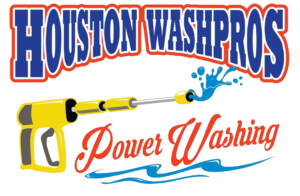Rust is a common problem that can cause damage to metal parts and equipment. There are several ways to remove it, from using commercial-grade chemicals that eat away at rust buildup and stains to more DIY approaches.
Acid-based rust removers emit chemical fumes and require users to work in a well-ventilated area with protective gear. They also run the risk of causing surface damage due to their corrosiveness. Learn more by clicking here.
WD-40 Rust Remover Soak
WD-40 is an excellent rust preventative and can help loosen stuck screws. It can also be used as a lubricant to free up rusted hinges or car door latches. It won’t remove rust though, it simply forms a coating over the surface that stops oxygen from coming into contact with it.
Specifically designed to displace water (WD = water displacement formula) it works fairly well as a lubricant but doesn’t penetrate corrosion like dedicated penetrating oils such as KROIL, PB Blaster, or SeaFoam Deep Creep do. These products have a low surface tension so they “penetrate” microscopic cracks and pores in rust and reduce friction between metal parts to break them apart.
The WD-40 Specialist 1-gallon rust remover soak safely dissolves and restores tools, equipment, and surfaces to bare metal without harming gaskets or chrome. This non-toxic and biodegradable product is great for tractors, farm equipment, auto restorations, trailers and hitches, and rusted tools.
Rust Remover Liquid
A liquid formula that can be sprayed or poured onto rusty items works best on tools, candlesticks, flatware, and other antiques. It is formulated with sodium hydrosulfite and doesn’t damage other materials like copper, vinyl, plastic, or painted surfaces.
Some of these rust dissolvers contain citric acid (found in citrus fruits and used to flavor soft drinks, candy, and some jams). Bull Frog Rust Remover is a good example. It can be left on for 15 minutes or less to treat light rust and should then be rinsed with water.
Other rust removers use more powerful chemical processes or harsher acids to treat rust. They work well but can be hazardous to handle and may require specialized equipment or training to safely use. Whether using a commercial or homemade solution, always follow directions and wear gloves and eye protection during treatment. After removing rust, treat the item for corrosion prevention to prevent it from re-forming quickly.
Rust Remover Powder
A powdered form of rust remover works on metal and other materials like ceramics, concrete, fabrics, and more. It’s usually made of sodium hydrosulfite and can dissolve mild rust without damaging delicate materials. Expert mechanics often use it to clean tools or rusty parts.
Chemical-based rust removers use strong acids or strong alkalis to dissolve rust and other mineral deposits. The caustic chemicals can damage the underlying metal and require strict safety precautions. Some types of rust remover, such as hydrochloric acid (also known as muriatic acid in its diluted form) and phosphoric acid, are extremely dangerous and require special handling.
Chelating rust removers bind to iron oxide and strip it away. They don’t contain acids or alkalis, making them safer to handle. Chelating rust removers are available in liquid, spray, and gel formulations; soaking rusted gear in a liquid solution is typically required for 30 minutes to 24 hours for effective treatment. Iron OUT powder is an alternative to chemical-based rust removers; it can be used on hard-to-clean items like toilets and patio furniture, or in locations where the equipment cannot be fully immersed.
Iron Out
Rust remover sprays allow you to target specific areas and rust stains. They’re especially useful for hard-to-reach spots that are difficult or impossible to soak in a solution. They’re also often less caustic than a liquid, powder, or gel option, making them safer and more convenient to use on surfaces that you don’t want to damage.
Alternatively, you can try a chelating rust remover that doesn’t need to be soaked in a tub to work. These products, like Metal Rescue, are non-toxic and acid-free. They’re a good choice for spot-treating items like wrenches, c-clamps, and pocket knives without the need for spraying or scrubbing.
Another option is a rust converter, which can be used on broad areas that you plan to paint over later. These products transform the rust into a primed surface that is ready for painting, rather than simply wiping away the rust. Depending on the type of converter you choose, it may be available in spray bottles or aerosol cans. Read next.
